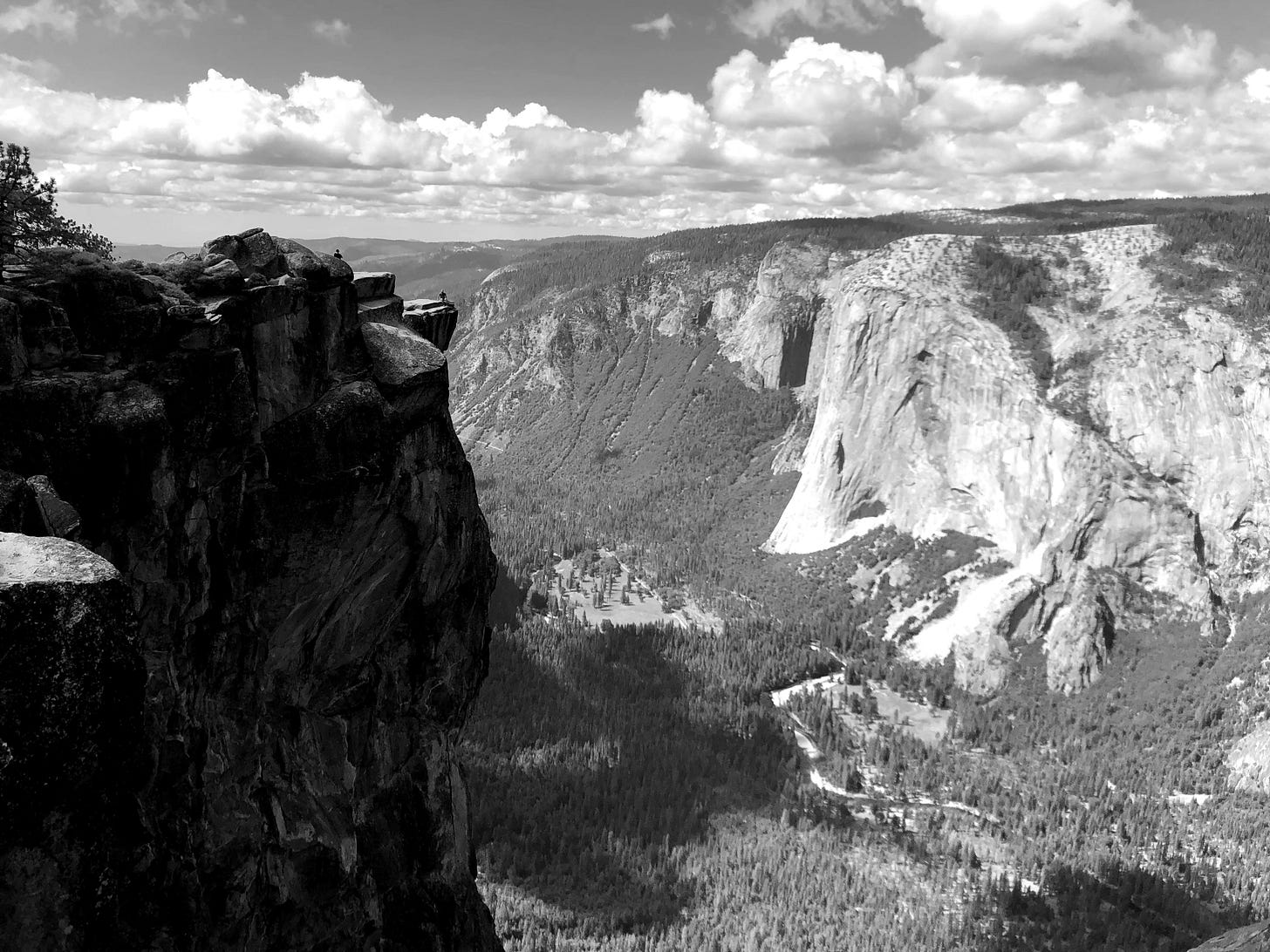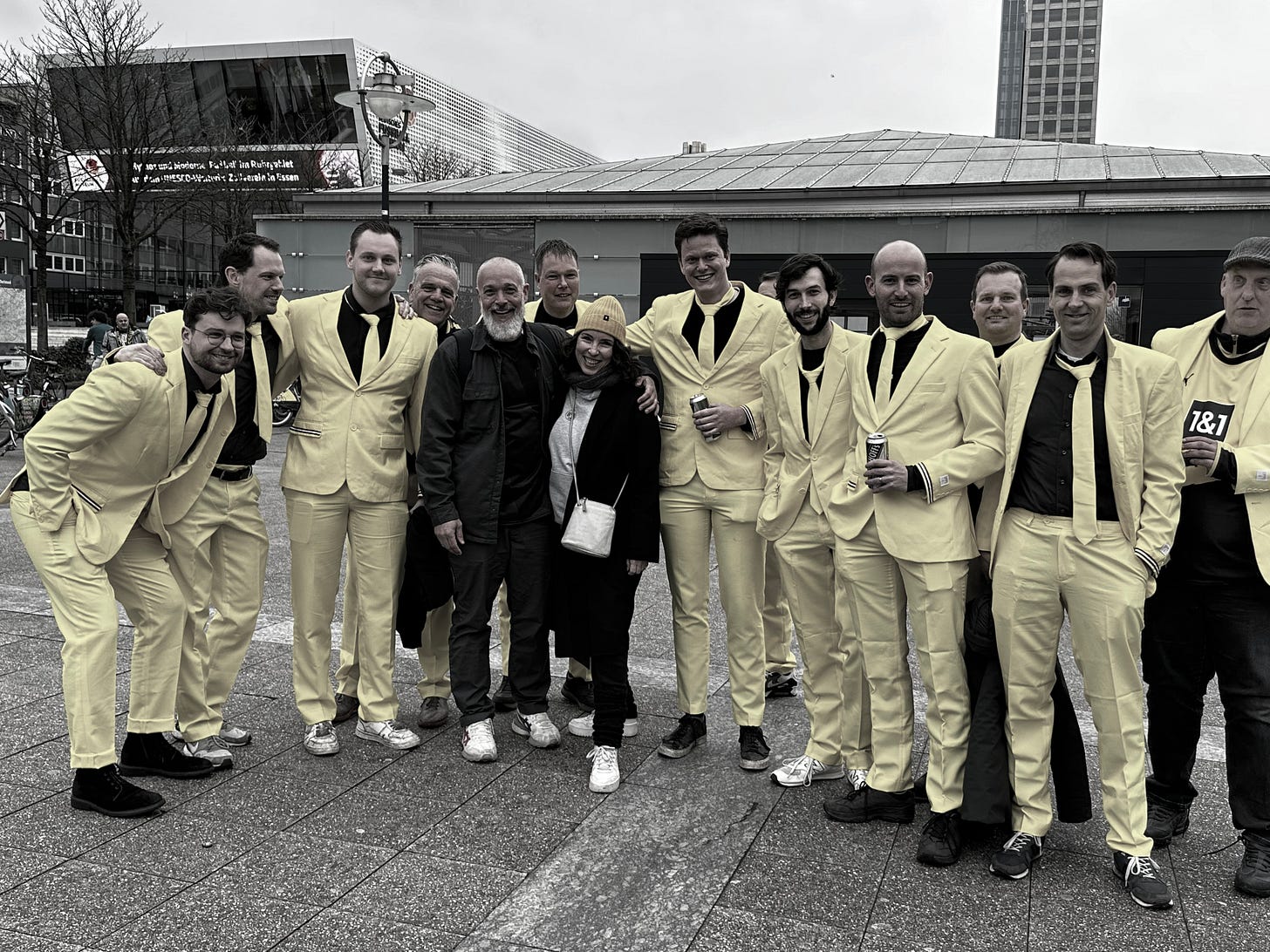Never Walk Alone: Introducing Your Epic Path Through Pain.
Why we avoid the valley—and why it’s the very place we often meet God. As we walk through the painful places (not around, over, or under), it is with others where we find healing and wholeness.
We’re in a series called Walking Poplar Street, which takes its name from the literal street I grew up on—and the valley of weeping I didn’t fully understand until decades later. That neighborhood, marked by divorce, poverty, and buried emotion, became a holy place of transformation.
Walking Poplar Street: From The Valley of Weeping to the Springs of Refreshment
I used to tell people I grew up in the suburban hood.
Psalm 84 calls this the Valley of Weeping, and it promises something stunning: this valley of pain can become a place of refreshing springs. This week, we explore a truth I had to learn the hard way—God doesn’t lead us around our pain. He walks with us through it. And He never expects us to do it alone.
Last week, I told you about Poplar Street.
I shared how I discovered—almost by accident, almost by divine setup—that the Hebrew word baca in Psalm 84 means both “weeping” and “poplar.” And that just so happened to be the street I grew up on.
It was a real place. A place full of pain and loss and poverty and silent heartbreak. Many memories I tried to forget… until I realized God had been shaping me through them. I called it my Valley of Weeping.
But Psalm 84 doesn’t stop there. It says something stunning:
“When they walk through the Valley of Weeping,
it will become a place of refreshing springs.
The autumn rains will clothe it with blessings.”
— Psalm 84:6
The valley becomes a spring. The place of sorrow becomes the place of transformation. That’s what I want to unpack today. But first, I want to tell you a story of going through—rather than around.
The GPS That Got It Wrong
A few years ago, I was driving a van full of students on a youth camp trip in the mountains. Our goal was a popular hiking trail, and the leader had mapped out what looked like a straightforward route—highway, turnoff, parking lot, hike.
Simple enough.
But somewhere along the way, the GPS rerouted us. A quicker way, it claimed. A shortcut that would shave off 10 minutes. We were already running behind, so we followed it.
At first, it seemed fine. We turned off the paved road and onto a gravel one. Then the gravel turned to dirt. Then the dirt turned to ruts. And before I knew it, we were bouncing along a rough-cut jeep trail—one very much not intended for a 15-passenger van full of teenagers.
No cell signal. No signs. No way to turn around.
What was supposed to save us time ended up costing us far more—time, energy, and a good amount of my nerves. Eventually, we made it back to the paved road. But not before I learned a hard truth: shortcuts through the unknown almost always come at a cost.1
The Valley You’re Trying to Avoid
That moment behind the wheel taught me something more profound.
So many of us try to avoid the valley. We’re uncomfortable with grief. We don’t want to revisit the pain. We’re scared of what we’ll find if we go too far down that road.
So we look for shortcuts:
We distract ourselves with busyness or entertainment
We suppress emotions instead of expressing them
We try to “fix it” quickly with easy theology or positive thinking
We isolate because we’ve been hurt before
We take whatever route seems quicker—anything to avoid walking through the dark places of our story.
But Psalm 84 reminds us:
“When they walk through the Valley of Weeping…”
Not around.
Not over.
Not past.
Through.
Never Walk Alone
Did you catch the pronoun?
“They” walk through it.
Not “he.”
Not “she.”
Not “you.”
They.
Pilgrimage was never a solo event. In the ancient world, people traveled in groups for their religious pilgrimages. The Egyptians traveled to Abydos to visit the grave of Osiris. The Greeks journeyed to the Temple of Apollos to hear the Oracle of Delphi speak. The Jews trekked to Jerusalem to worship at the Temple.
It was in groups that these cultures would journey to their holy places. Families. Clans. Communities. They didn’t walk through the valleys alone. That’s not just historical—it’s theological.
From Genesis to Revelation, we see the pattern:
Adam walked with God.
Moses led a people.
Jesus traveled with his disciples.
The early church gathered daily.
Even heaven is pictured as a multitude, not a solo retreat.
Your spiritual journey is personal—but it was never meant to be private.
There is Power in We
My favorite soccer team in Europe is Borussia Dortmund, a German team. Last Spring, Kia and I had the opportunity to go to France and North Africa to visit two of our missionaries. It was our first time in Europe, and we didn’t know when we’d be back, so we took the time to visit Dortmund and watch a match.
One of the more memorable experiences happened right before the game started. With a full crowd of 80,000+ people, an old song by Frank Sinatra, covered by the British band Gerry and the Pacemakers, came over the loudspeakers (the above video is not from the game I was at, but it was very similar).2
In full voice, the crowd sang along:
When you walk through a storm
Hold your head up high
And don't be afraid of the dark
At the end of a storm
There's a golden sky
And the sweet silver song of a lark
Walk on through the wind
Walk on through the rain
For your dreams be tossed and blown
Walk on, walk on
With hope in your heart
And you'll never walk alone
You'll never walk alone
Walk on, walk on
With hope in your heart
And you'll never walk alone
You'll never walk alone
This is the idea of pilgrimage. It is a journey through the good and bad parts of the road…with your community.
Pain Without People Becomes Poison
Let me say it clearly: You need people in your valley.
When you suffer in isolation, your pain festers. It grows into bitterness, resentment, or despair. That’s why the writer of Hebrews warned:
“See to it that no one fails to obtain the grace of God; that no ‘root of bitterness’ springs up and causes trouble…”
— Hebrews 12:15 (ESV)
You were never meant to carry pain alone. You were never meant to heal alone. Yes, God is with you. But so is His body—the church. As followers of Jesus, the church is our community that we pilgrimage with.
It is with the church community that we are called to move through our pain.
They’re not perfect. They might not always say the right thing. But you’ll never find the refreshing spring of Psalm 84 if you’re walking solo.
The Lie of Self-Sufficiency
We live in a culture that worships self-sufficiency. You pull yourself up by your bootstraps. You rub some dirt on it and tough it out. You never let them see you cry. Our culture teaches you to prioritize self-dependence above all.
But God’s Kingdom is built on interdependence.
Paul said it this way:
“If one part suffers, all the parts suffer with it…”
-1 Corinthians 12:26 (NLT)
We need each other.
In joy. In sorrow. In everything.
Why We Avoid the Valley
(And What to Do About It)
There are a lot of reasons we avoid the valley:
Fear. We’re afraid it will consume us
Confusion. We don’t know what to say.
Shame. We think we should be stronger by now
Trust. We’ve been hurt by people we trusted before
But here’s the truth: Avoiding the valley doesn’t eliminate the pain. It just postpones the healing.
And healing requires movement. Not avoidance.
Walking. Not running.
Facing. Not stuffing.
So if you’re in the valley now—or if you’ve been stuck on the edge of one—can I invite you to take a small step?
I recently read The Next Right Step by Emily Freeman about how to make choices in life when we seem stuck. What is most interesting about her advice can be summed up like this: Learning to take significant steps in life is a series of small, incremental steps in the right direction.
So, I’m not asking you to leap. I’m not even suggesting you take a normal stride. Just take a small step.
Practical Ways to Walk with Others in the Valley
Reach out to someone you trust.
Say, “Hey, I’m walking through something hard. Can I talk with you?” That’s it. No script required. Don’t feel like you have anyone else? Message me; let’s talk.Share a memory or story with someone who was there.
Sometimes, revisiting your Poplar Street with someone who lived nearby is a healing act in itself.Join a small group, even if it’s awkward at first.
You don’t need instant connection—you need consistency.Pray this simple prayer:
“God, bring the right person into my valley. And help me be the right person for someone else.”
The Valley Is a Path, Not Permanent
Let me close with this:
The valley isn’t meant to be your home.
It’s a pathway. A sacred in-between. A space where God meets you in your sorrow, walks with you through it, and leads you beyond it.
“Even when I walk through the darkest valley,
I will not be afraid, for you are close beside me.”
-Psalm 23:4
You’re not alone.
You never were.
Even if it felt that way.
This week, I invite you to resist the shortcut. Refuse isolation. Walk through the valley—both with Jesus and with someone who loves Him, too. Whether sooner or later, you will exit your valley. It is not forever.
Next week, we’ll talk about where strength comes from when your own has run out. (Spoiler: it doesn’t come from you.)
But for now, remember:
You’re not meant to walk alone.
And you’re not far from the spring.
With you in the valley,
Andy
Ironically, the trip back to our camp did the exact same thing. If possible, don’t trust your GPS.
This trend started with the Liverpool football club in the 1960s. It has now expanded to clubs in Ireland, Germany, and the Netherlands.
Finally, I want to thank you for your subscription and welcome Jesse and Jeff as new subscribers. A big shout-out to Russ for being a new paid subscriber! I am amazed you appreciate my writing enough to make space in your inbox. All the posts from this newsletter will always remain free, but you can show your support through a paid subscription here:
Another way to support is to share this or any post with a friend who could benefit.
Finally, your comments help more people see this post, and I would love to hear your thoughts on this topic!







